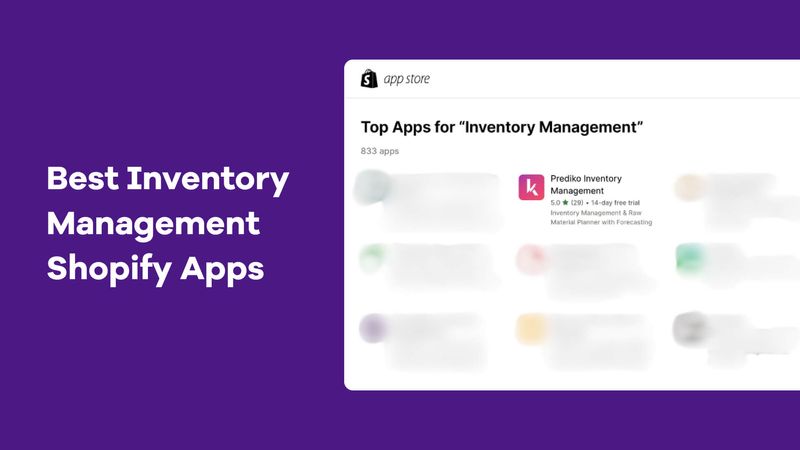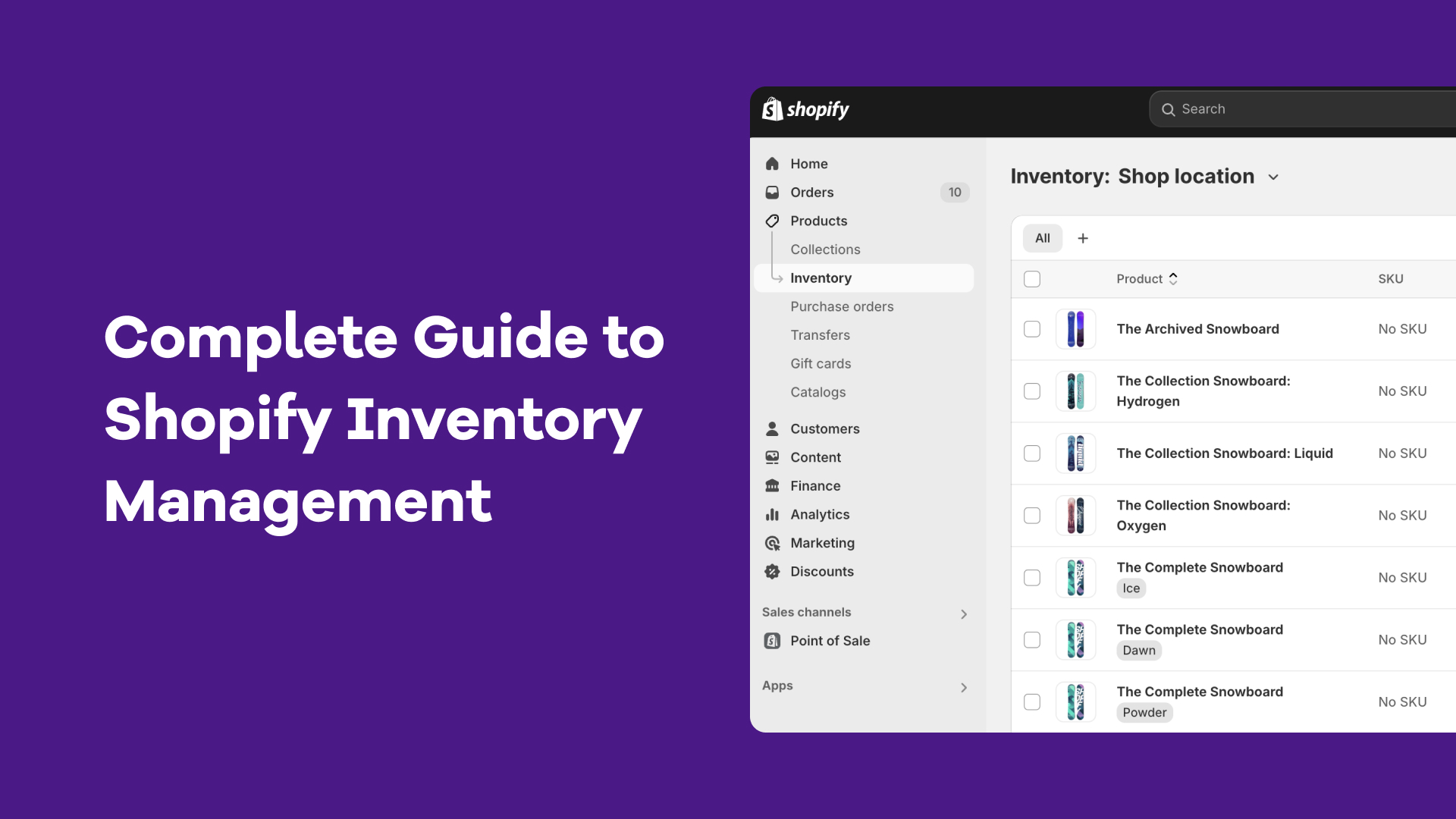Imagine losing €4.2 billion in sales. And not because demand dropped, but because your product wasn’t there when shoppers reached for it.
That’s exactly what happened with Fuze Tea, a Europe-based FMCG brand, when they faced major stockouts, leading to lost revenue and weakened shelf presence.
That kind of loss doesn’t happen slowly. It happens fast, and it hits hard.
Inventory management in FMCG industry is more than just a routine backend task. Errors don’t just hurt margins, they destroy sales velocity and consumer trust, and leave gaps that competitors fill overnight.
This is what makes FMCG inventory management different, what metrics you need to track, and how the right tools and frameworks can help.
Why FMCG Inventory Management Is Uniquely Challenging
Inventory management might sound like a universal process: track stock, reorder when low, and avoid waste.
But in FMCG, it plays by a different rulebook. The pace is faster, the products are shorter-lived, and the consequences of delay are immediate.
Here’s a deep dive into the challenges FMCG inventory management brings.
Challenge 1: Managing perishable or short-shelf-life products
FMCG products like beverages, packaged food, and cosmetics have short shelf lives. The clock starts ticking the moment they’re manufactured.
If inventory sits too long, at a warehouse, in transit, or on a shelf, it risks expiry. And once it’s expired, it’s a write-off.
You can’t just stock extra for safety. Overstocking perishables doesn’t create a buffer; it creates waste. The challenge is to move just enough, just in time, through the right channel, and always within shelf-life limits.
Challenge 2: Excess SKU variations
FMCG thrives on variety, but a high SKU count brings real challenges. Forecasting and maintaining the right stock levels become harder as demand fluctuates across products and customer preferences shift weekly.
A Shopify store may run out of the strawberry flavored cookies while being overstocked on the chocolate flavor. The risk isn’t just overstock or stockouts, it’s deadstock, items that stay on shelves too long and eventually need to be written off.
Challenge 3: Unpredictable demand surges
In FMCG, sales spikes rarely come with a warning. Weather, holidays, or even a trending TikTok can increase demand wildly. You can’t assume what sold last week will sell this week. Fast-moving doesn’t mean predictable.
This creates a constant tension: stock too little and you lose the sale. Stock too much and you risk wastage or markdowns. Most of these demand changes aren’t gradual. They hit hard and fast, and often after the window has already closed.
Challenge 4: Handling inventory across multiple sales channels
If you sell across multiple channels (like retail stores, Shopify, or marketplaces), managing inventory gets more complex. Each channel has its own sales velocity, return patterns, and restock cycles.
One channel may restock a product every 3 days, another only once a month. Some need smaller pack sizes, others full cartons.
Core Metrics FMCG Brands Must Track
Managing FMCG inventory is complex, but tracking a few key metrics can simplify it.
Here are the essential metrics FMCG brands should monitor to keep inventory lean, fast-moving, and profitable.
1. Days Sales of Inventory (DSI)
DSI, also known as Days Inventory Outstanding (DIO), tells you how many days it takes, on average, to sell the stock you have on hand.
In a space like FMCG, where products can spoil, expire, or become irrelevant within weeks, this metric shows how long you're tying up capital in goods that haven’t moved.
A high DSI means inventory is sitting too long, increasing the chance of waste or markdowns. A low DSI, on the other hand, indicates faster turnover and healthier inventory flow.
Formula
DSI= (Average Inventory/Cost of Goods Sold) × Number of Days
Ideally, this number should stay as low as possible without causing stockouts. A short DSI helps reduce carrying costs and keeps products fresher across the supply chain.
2. Inventory Turnover Rate
This metric tracks how many times you're replacing your inventory within a given period. In FMCG, a high turnover rate means you’re selling your stock quickly and keeping only what’s needed.
That’s a good sign, especially for items with limited shelf life or high demand variability.
Formula
Inventory Turnover = Cost of Goods Sold/Average Inventory
If the rate is too low, it means products aren’t moving, which puts you at risk for expiry, damage, or obsolescence. A consistently high turnover rate usually signals tight inventory control and good alignment with demand.
P.S. Go a level deeper with our full guide on inventory turnover.
3. Stockout Rate or Frequency
Stockout frequency tells you how often products are unavailable when someone wants to buy them. In FMCG, this matters the most as consumers don’t wait for restocks; they pick the next brand on the shelf and often stick with it.
Formula
Stockout rate (%) = (Number of SKUs out of stock / Total number of SKUs) × 100
A high rate or frequency means you’re missing sales, disappointing customers, and probably losing market share. Aim to keep this low across all your locations, channels, or warehouses.
4. Overstock percentage
Overstocking is often treated like a safe option to avoid running out, but in FMCG, it comes with a cost. Overstock percentage shows how much of your inventory is above what’s required to meet actual demand.
Formula
Overstock (%) = (Excess Inventory / Total Inventory) × 100
Too much overstock means higher storage costs, more expired goods, and eventually forced discounting. The goal is to strike a balance: hold just enough to meet fluctuations without creating unnecessary surplus.
Seeing signs of excess stock? Read this guide on overstock inventory and how to fix it fast.
5. Carrying cost
This metric sums up the cost of holding inventory, storage, insurance, depreciation, and shrinkage. In categories where margins are already tight, carrying costs can quietly eat your profits.
Formula
Carrying Cost (%) = (Total Carrying Costs ÷ Inventory Value) × 100
If this number goes up, it means your inventory is getting bulky or inefficient. The faster you move stock, the less money you waste just holding it.
6. FEFO (first-expired, first-out) Accuracy
FEFO accuracy measures how reliably you're moving out the products that expire soonest. It matters because in FMCG, older stock doesn't just lose value, it often becomes unsellable.
When warehouses or stores don’t follow FEFO, older products may sit untouched while newer ones sell first. This leads to waste and forces last-minute discounts on near-expired stock.
Accuracy here should be as close to 100 percent as possible. Anything lower signals a need to review warehouse operations, picking systems, or shelf rotation rules.
Essential FMCG Inventory Management Frameworks & Techniques
To manage fast-moving inventory efficiently, FMCG brands rely on proven frameworks and techniques. Some of these include.
1. ABC analysis for SKU prioritization
ABC analysis is a classification method that ranks inventory based on its contribution to overall revenue. In FMCG, where there may be thousands of SKUs across regions and categories, this is a practical way to focus on what matters most.
Here's how it works
- Category A is the top revenue contributor. These need frequent forecasting and reordering, tighter stock control, and high availability.
- Category B is moderate-value products with steady sales. They need regular review and balanced stock levels.
- Category C covers low-value SKUs that can be ordered less frequently and with minimal oversight
Remember, high-priced, slower-moving products like premium gift boxes can still be classified as “A” items, while low-cost, fast-selling SKUs like single-serve packs may fall into “B” or “C” categories.
Want to learn more? Read this detailed guide on ABC analysis.
2. Safety stock formulas and buffer thresholds
Safety stock is that extra layer of protection that helps you avoid stockouts when things don’t go as planned. However, in FMCG, the real challenge is knowing how much is enough without letting it turn into dead stock.
Fast-moving items during promotions may require higher safety stock to handle sudden demand spikes.
In contrast, short-shelf-life products like chilled juices or yogurt can’t afford to sit idle. Their buffers need to be tighter, more responsive, and unique to each sales channel, relying on accurate forecasting.
Important factors to consider for safety stock in FMCG include
- Demand variability: SKUs with unpredictable or seasonal demand need higher buffers, while core products with stable sales may need very little.
- Supplier reliability: Products sourced from vendors with delays or international lead times require more buffer stock to manage risk.
- Shelf life: Shorter shelf-life products can’t be overstocked. Excess leads to spoilage and markdowns.
- Channel dynamics: eCommerce and modern trade often demand stricter stock availability. Buffers should be established by channels.
Smart FMCG brands don’t use a one-size-fits-all approach. They set dynamic safety stock levels by product type and channel and adjust them regularly based on seasonality, supplier changes, or promotions.
3. Cycle counting vs. annual stocktake
Cycle counting breaks inventory checks into smaller, scheduled batches, done throughout the year without disrupting operations.
In contrast, annual stocktake is a full inventory count done once, usually at year-end, often requiring a pause in operations
But the real question is, which one should an FMCG brand use?
Cycle counting is a better fit for FMCG because of the pace, volume, and shelf life sensitivity.
With daily movement, expiry risks, and constant replenishment, waiting months to spot an inventory error can lead to spoilage, out-of-stocks, or financial write-offs.
Cycle counting allows brands to
- Identify and fix stock mismatches early
- Prioritize high-value or fast-moving SKUs for more frequent checks
- Maintain stock accuracy while operations continue as usual
4. CPFR (Collaborative planning, forecasting & replenishment)
CPFR is a supply chain framework where manufacturers and retailers work together to plan demand, forecast sales, and manage replenishment.
Instead of working in silos, both sides share relevant data, align on sales expectations, and coordinate inventory movement.
This model works especially well in FMCG because it helps reduce uncertainty on both ends.
Retailers get better product availability and fewer stockouts or overstocks. Manufacturers get accurate demand signals, allowing them to plan production more effectively.
In a typical CPFR setup
- Retailers share real-time sales data, upcoming promotions, and historical trends
- Suppliers respond with adjusted forecasts, production plans, and dispatch schedules
- Both sides agree on replenishment timelines and stock targets
Tech-Enabled Best Practices for FMCG Inventory Management
Managing FMCG inventory at scale requires more than just manual checks and spreadsheets.
With fast-moving products, tight margins, and shifting demand, tech-enabled practices give brands the speed, accuracy, and control they need. These include
1. Just-in-time replenishment workflows
Just-in-time (JIT) replenishment means ordering inventory exactly when it’s needed, no earlier, no later. For FMCG brands, this reduces storage pressure, keeps products fresh, and minimizes holding costs.
In a JIT setup, inventory is reordered only when it hits a specific threshold, based on real-time demand. Products arrive just in time for sale or production, reducing the need for excess storage.
For example, a protein bar in retail outlets may be restocked daily based on live POS data.
This method works best when the supply chain is reliable, data flows smoothly between systems, and lead times are consistent.
2. Warehouse management system (WMS) integration
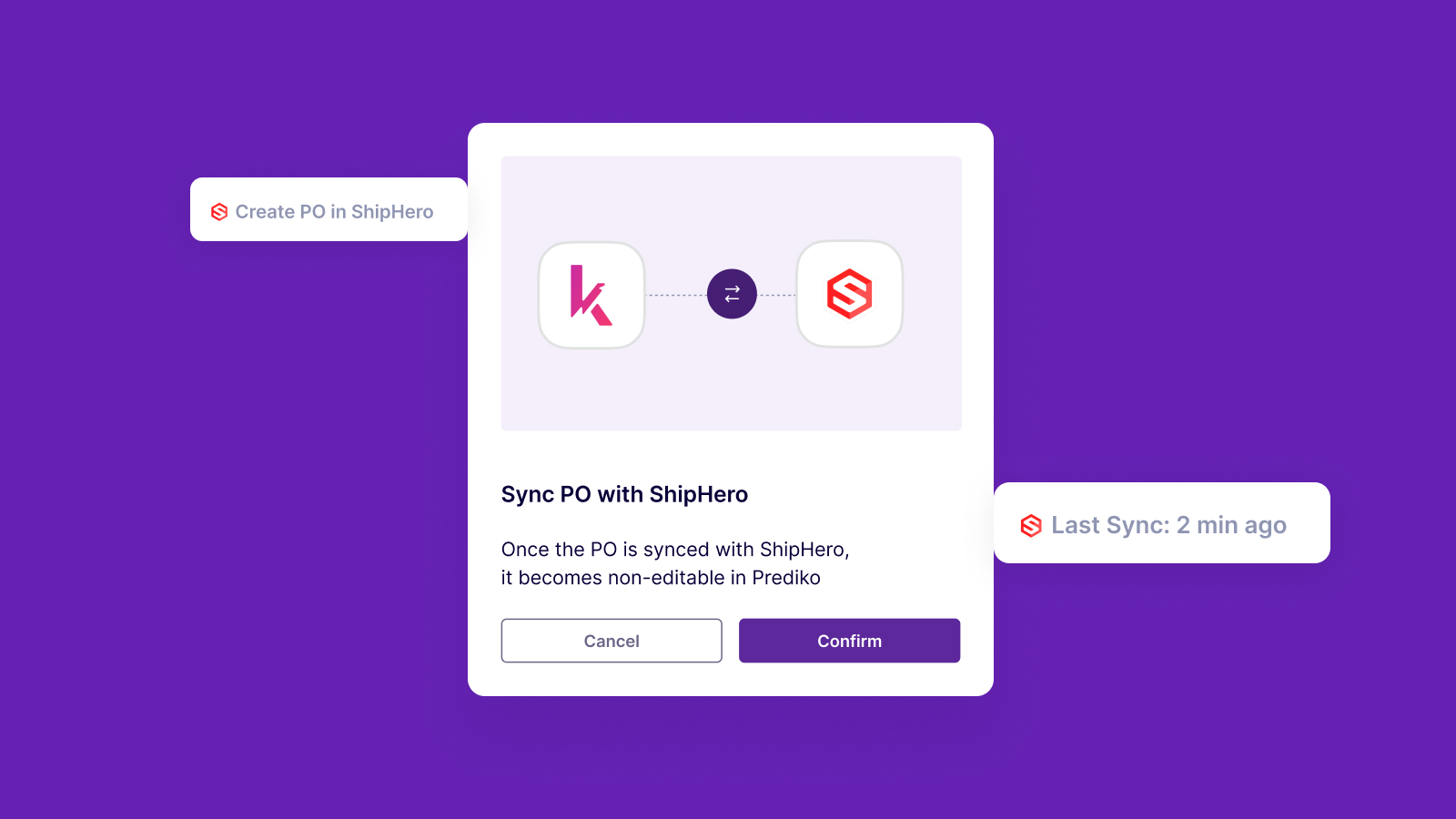
Another key best practice is integrating a WMS into your FMCG inventory management systems. It does more than automate picking and packing. It aligns warehouse workflows with key priorities like freshness, speed, accuracy, and scalability.
For FMCG brands, WMS is essential even for mid-sized setups where SKUs rotate quickly and shelf lives vary across categories.
A good WMS should be able to handle expiry-based picking logic (like FEFO), manage different packaging levels (individual units vs. cartons), and track real-time movements across multiple storage zones.
Pairing it with an inventory management Shopify solution ensures your store, warehouse, and purchase systems stay tightly connected — giving you both operational speed and demand visibility.
This reduces expiry-related waste, flags aging stock at the batch level, replenishes based on actual demand, and helps catch picking errors.
In short, a WMS doesn’t just helps you know what’s in the warehouse; it’s lets you use that visibility to change how products are picked, moved, and shipped.
3. Use of digital twins and scenario-based planning
In FMCG, even small supply chain changes can have major impacts like stockouts, spoilage, or excess costs.
That’s why leading brands are turning to digital twins: real-time simulation models that mirror their actual inventory operations.
These models let teams test how the system would respond to events like demand surges, supplier delays, or shifts in product mix, before making any changes.
Scenario-based planning using a digital twin helps stress-test decisions under real business constraints, like nearing expiry dates, restock rules, lead times, and channel-specific demand.
It replaces guesswork with data-driven insights, making it easier to adjust safety stock, plan regional rollouts, or respond quickly to disruptions without risking inventory performance.
Why FMCG Brands Need to Choose Smart Inventory Tools
Now, putting these best practices into action requires the right tools, ones that can handle the speed, complexity, and shelf-life sensitivity of FMCG inventory.
Here’s why they matter, and what to look for in your inventory tool.
1. Centralized multi-channel visibility
FMCG inventory doesn’t live in one place. Some sit in warehouses, some in retail stores, some in fulfillment centers. For most businesses, that scattered setup makes even basic inventory decisions hard.
Trying to manage stock manually across disconnected channels creates delays, mismatches, and missed opportunities. And when you're already juggling expiry timelines, varying demands, and product variants, there can be no room for error.
For this, you need an FMCG inventory management software like Prediko that syncs real-time stock levels across your online store, POS, and multi-location warehouses. It becomes your single source of truth and surfaces actionable insights.
For example, Prediko’s Buying tab highlights low-stock SKUs across locations, helping you reorder in time to avoid stockouts while keeping overstock in check.
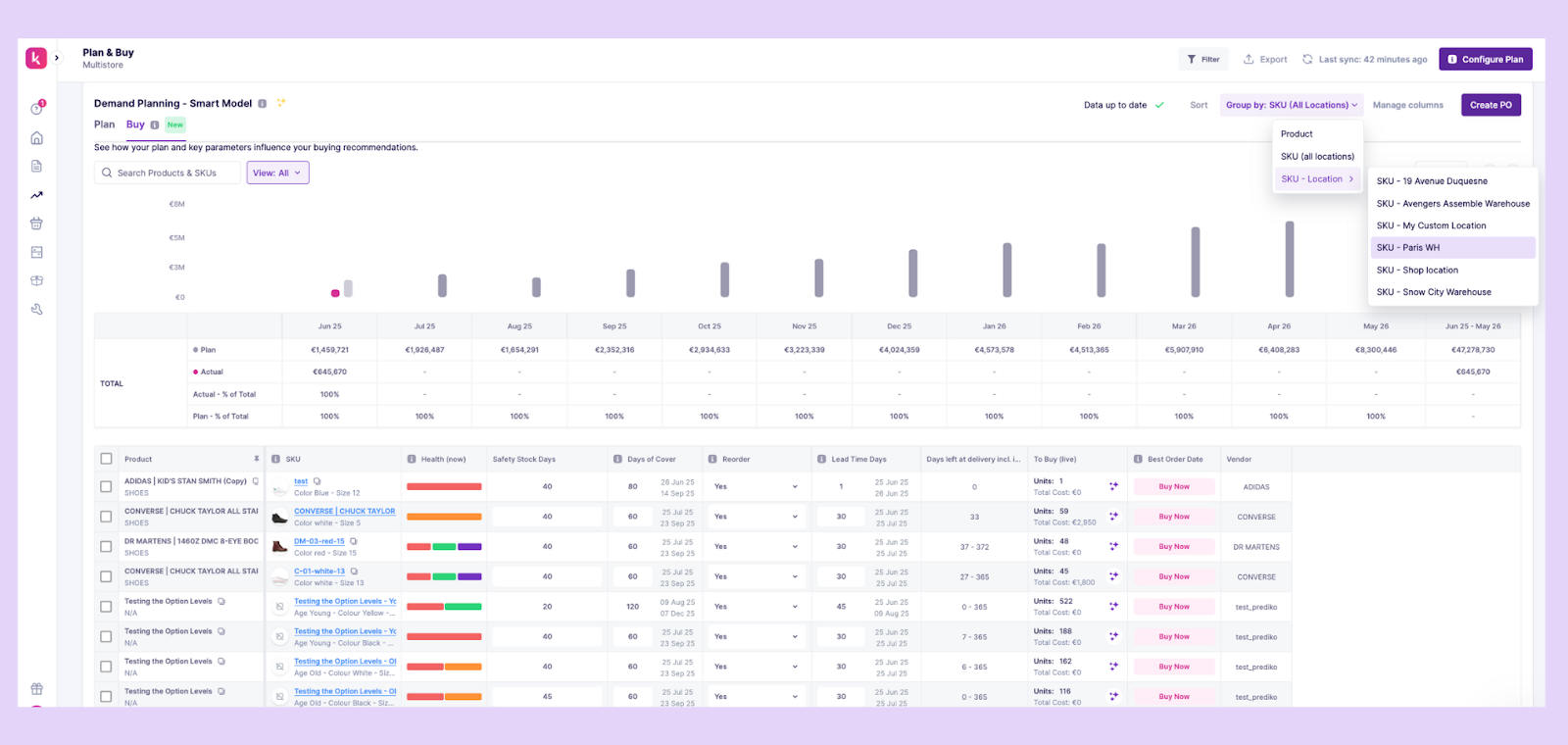
2. AI-driven demand and supply planning
Demand and supply often fall out of sync, especially during promos, seasonal spikes, or with fast-moving SKUs. The result? Overstock in some places, stockouts in others.
One study of an FMCG company in South Africa showed that after adopting a structured, tech-assisted demand planning process, forecast accuracy improved dramatically, customer service levels climbed from 86% to 95%, while logistics costs fell by nearly 1.8 % of points of sales.
Prediko helps you achieve similar results with AI-powered demand planning that learns from historical sales trends, seasonality, and promotions to forecast accurately at the SKU, product, and category level.
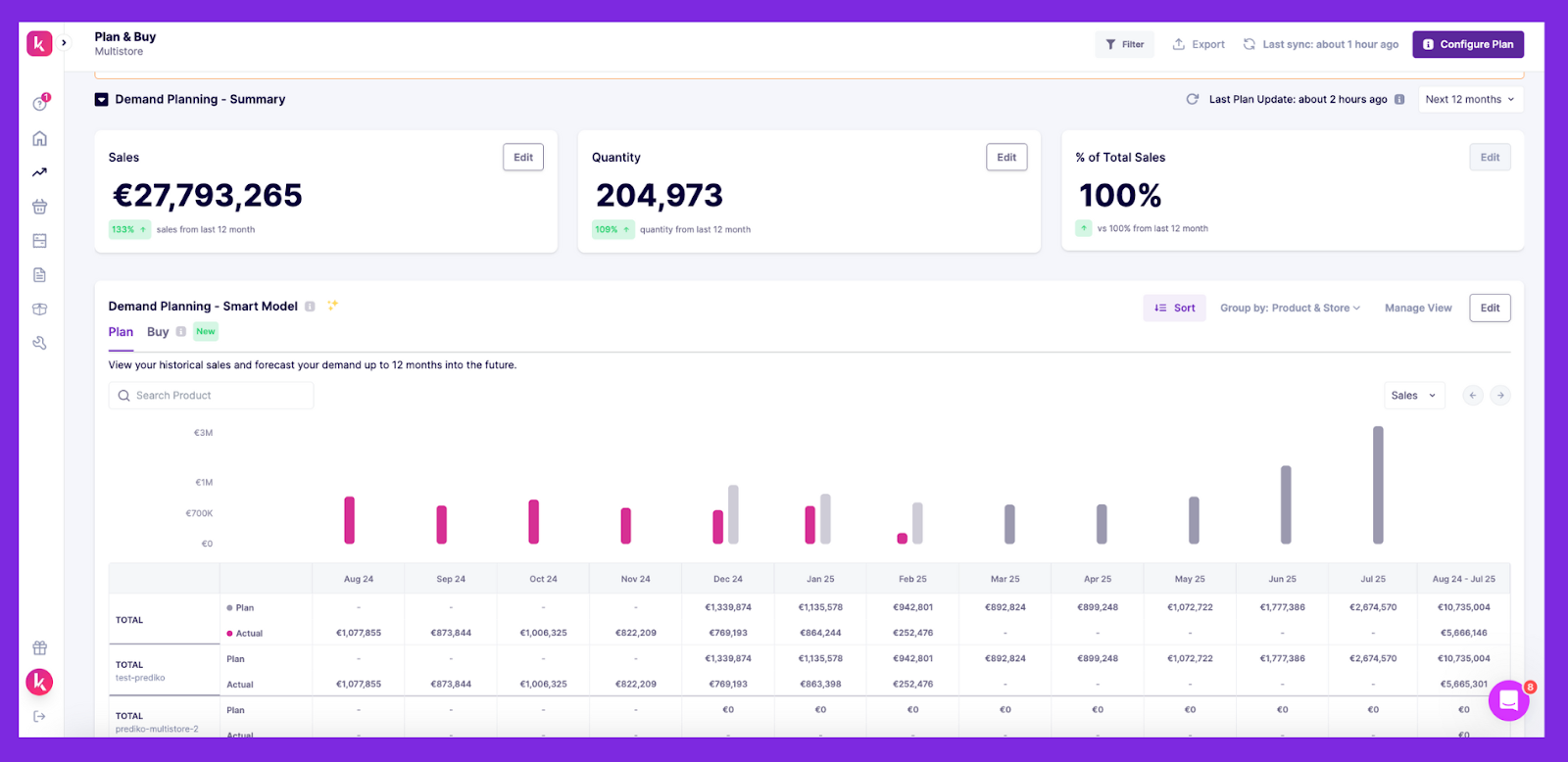
On the supply side, Prediko translates those forecasts into smart purchasing plans, factoring in lead times, safety stock, and current stock levels, so you're ordering the right products at the right time. This ensures demand and supply stay in sync, even as conditions change.
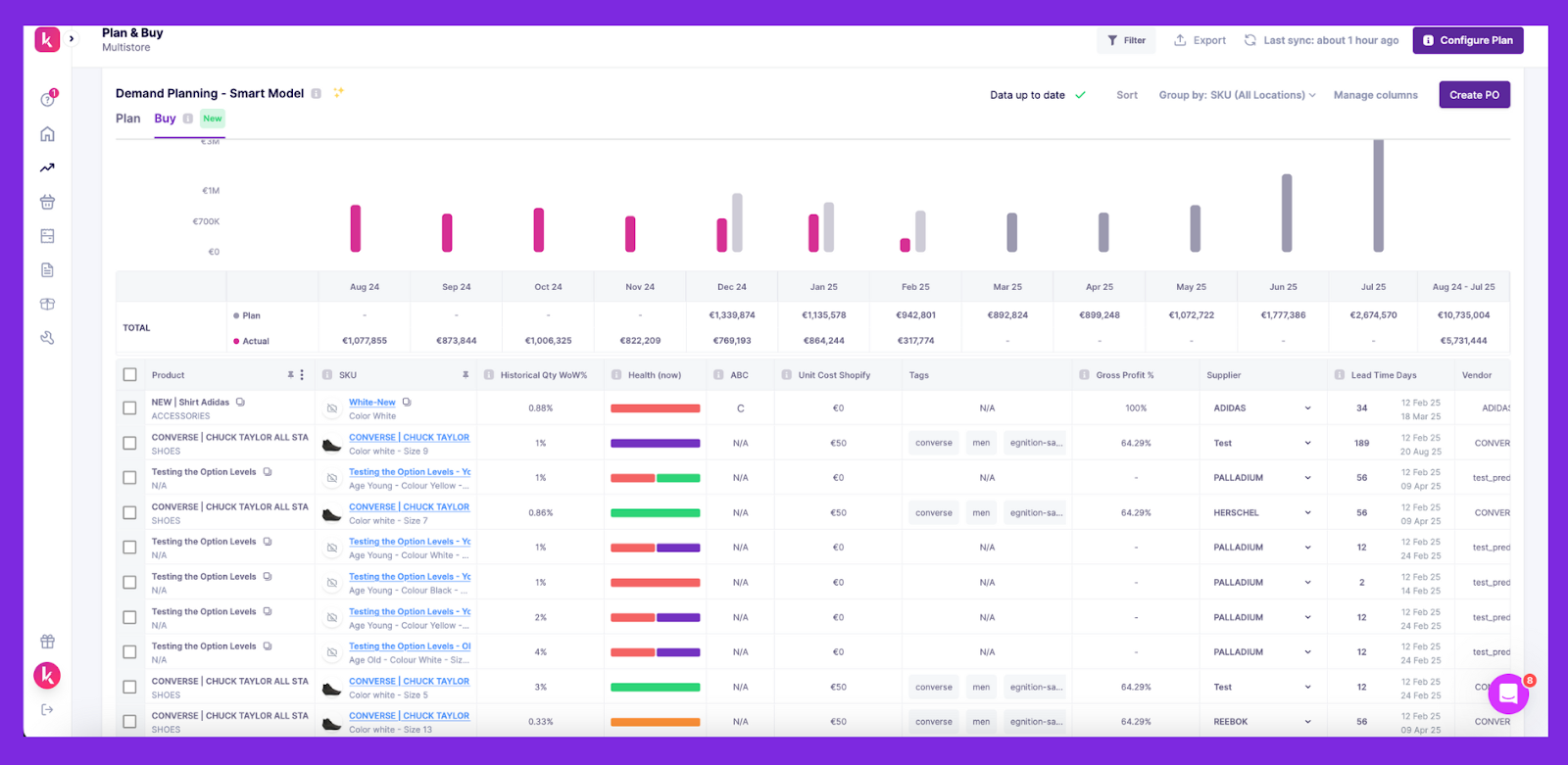
3. Smart purchase order generation with raw material tracking
Inventory breakdowns don’t always happen at the finished goods level. For many FMCG brands, the problem starts upstream, when raw materials aren’t available in time, production gets pushed, and deliveries slip.
The gap usually comes from delayed purchase orders or missing visibility into what’s running low.
Manual PO processes only make that harder. Without real-time view of stock levels, sell-through, or lead times, teams either over-order or miss critical reorders. That kind of uncertainty disrupts production and increases cost.
Prediko keeps this in check by providing reorder suggestions for both finished goods and raw materials, based on real-time finished goods demand and lead times.
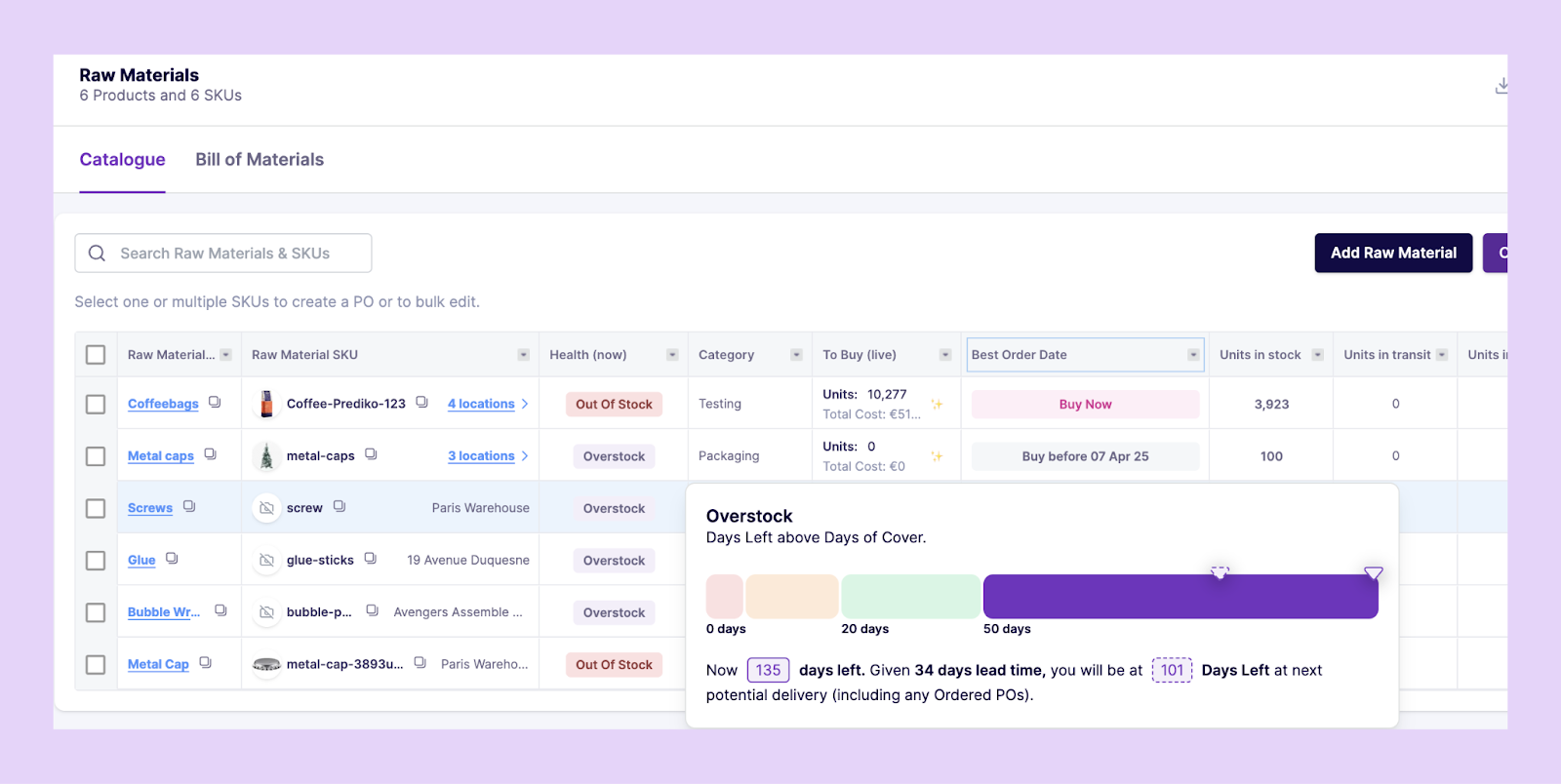
You can easily create POs from these suggestions with a click, then send to suppliers and track their status, all in one place.
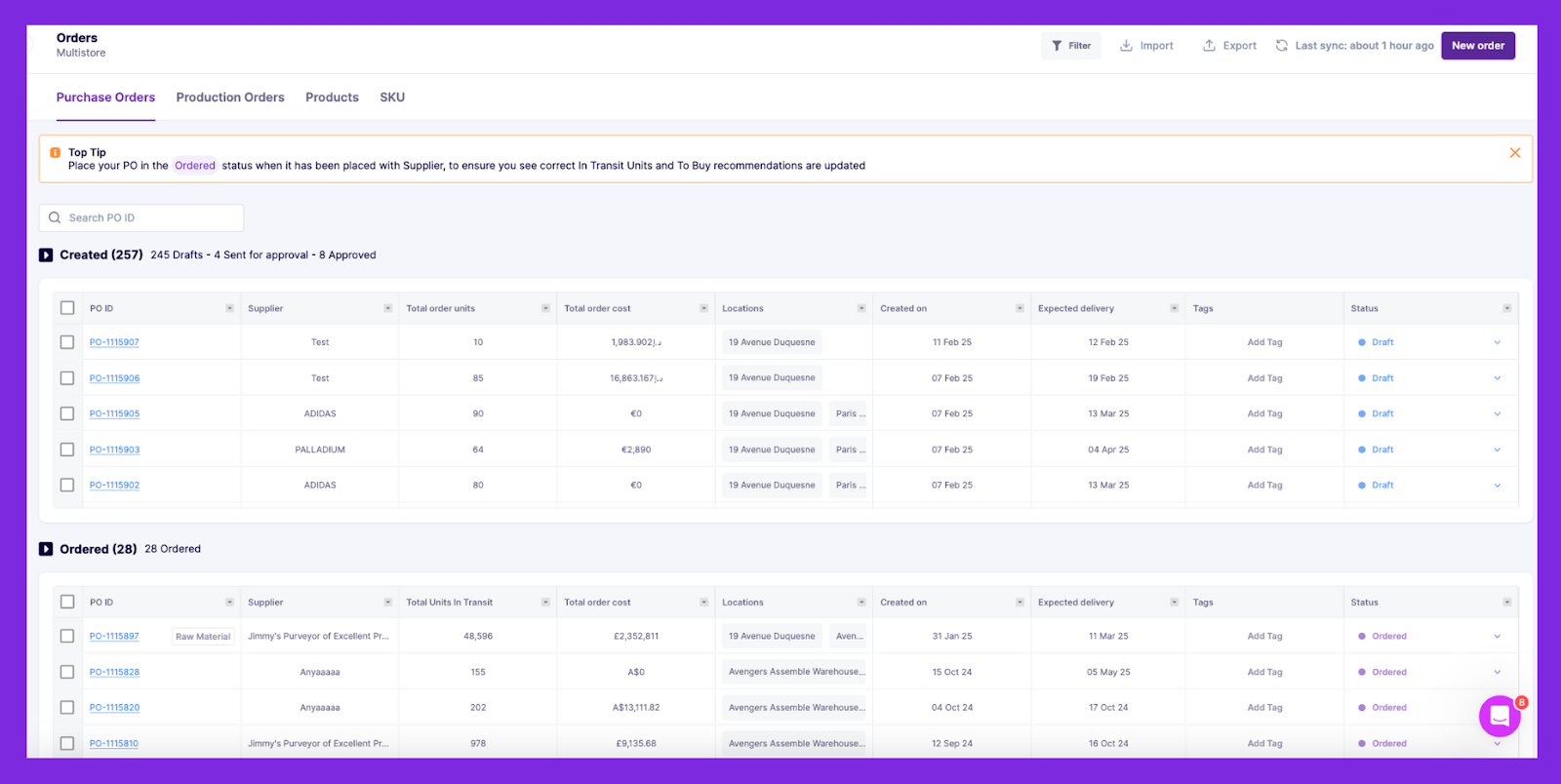
Want to automate your purchase orders? Read this guide to set it up.
4. Real-time dashboards for inventory insights
FMCG inventory decisions rely on timing, when to reorder, when to hold back, when to run a promotion.
But those decisions only work when they’re backed by live, accurate data. Without it, stock updates lag, revenue targets drift, and teams react too late.
Most static reports give you a view of what’s already happened. But in a fast-moving category, that delay creates risk. You need to know how much stock is sitting idle, which SKUs are at risk, and how sales are trending, all in real-time.
Prediko addresses this by providing a real-time view into stock levels, SKU performance, inventory reports (like ABC analysis), and sales trends across all stores and warehouses.

It identifies deadstock, flags at-risk SKUs nearing stockout or expiry, and surfaces the right insights at the right moment.

Step-by-Step FMCG Inventory Management Implementation Process
After covering the best practices, tools, and key metrics, it’s time to put it all into action. This step-by-step process will help you move from theory to execution.
1. Classify SKUs using ABC and FEFO
Start by segmenting your inventory.
Use ABC analysis to prioritize SKUs based on revenue contribution and sales velocity, so you know where to focus your attention.
Pair this with FEFO (First Expiry, First Out) to ensure perishable items are moved before they expire. Together, these methods help you reduce waste and manage stock more efficiently.
Tools like Prediko make it easier to flag which SKUs are ageing, underperforming, or sitting in excess, so you don’t need to manually find them.
2. Set up demand forecasting and reorder triggers
Use past sales data, seasonality, and promotional calendars to forecast demand at the SKU level.
Once you have accurate projections, define reorder points based on lead times and safety stock requirements.
This ensures you restock the right products at the right time, without overloading storage or missing sales.
With Prediko, there’s no need to set static reorder points. Just input your days of cover and safety stock by SKU or across your entire catalog, and Prediko will generate reorder alerts based on real demand.
3. Connect WMS and configure automation
Next, integrate a Warehouse Management System (WMS) to sync stock levels, automate picking, and maintain real-time inventory visibility across channels.
Configure rules for automated purchase orders, replenishment alerts, and batch tracking to simplify daily operations and reduce manual errors.
4. Track DSI, fill rate, and inventory turnover monthly
Once your system is live, monitor key metrics like Days Sales of Inventory (DSI), fill rate, and inventory turnover on a monthly basis.
These metrics give you a clear view of inventory health, helping you spot inefficiencies early and make data-driven adjustments.
Prediko simplifies this with a “Health Bar” that shows the status of each SKU, highlighting which are overstocked, understocked, or perfectly balanced, so you can take action instantly.
Get Started with Smarter FMCG Inventory Management
In FMCG, small inventory issues rarely stay small. A delay in restocking, excess piling up, or a missed signal from one channel can lead to real losses fast.
Solving that takes more than quick fixes; it needs a system that gives you control from end to end.
This guide laid out that structure: classifying SKUs, forecasting with intent, connecting tools, and tracking the right numbers. Now, you need to implement it.
Remember, it’s not about overhauling everything; it’s about getting the basics right and letting them work at scale.
If you’re ready to set that up with less manual work and more clarity, Prediko brings all of it into one place. Sign up for a 14-day free trial and see how it fits into your FMCG workflows.



.avif)



